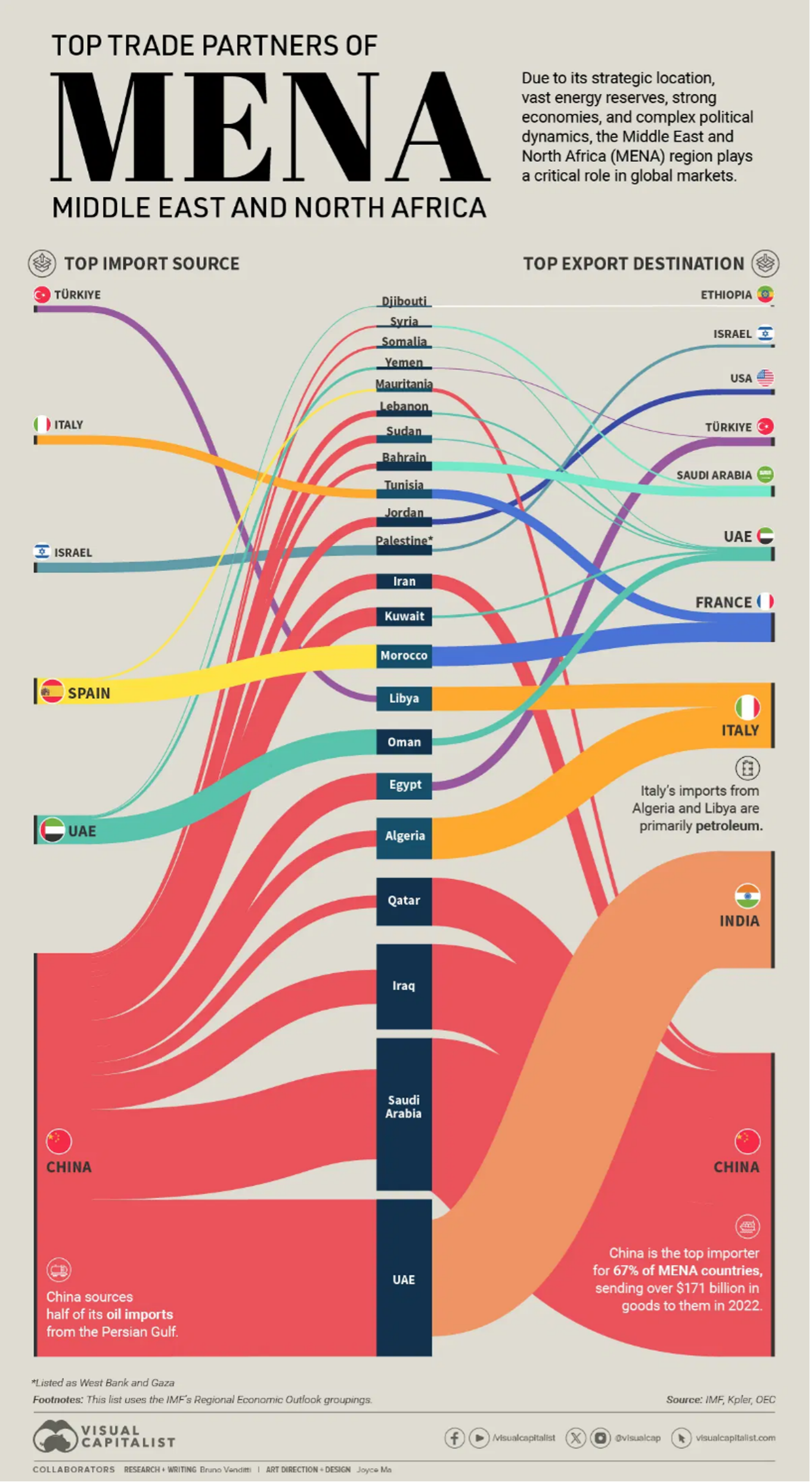Have you heard of “the belt and road Initiative” or the “silk Road Economic Belt” or the “one belt road”? Here is a graphic example of China buying influence.
The Middle East and North Africa (MENA) region plays a significant role in global markets. One way to visualize the economic interconnectedness of the MENA region is by examining its trade partnerships.
The graphic below illustrates the top trading partners of MENA countries. According to statistics provided by the International Monetary Fund (IMF), China emerged as the primary import supplier to MENA nations, providing goods worth over $171 billion to the region in 2022.
India also holds significant importance as a trading partner in the region, importing goods valued at more than $50 billion from the United Arab Emirates, with petroleum products accounting for over 40% of these imports.
Italy, serving as the foremost exporter to Tunisia, plays a pivotal role in trade with Middle East and North Africa countries. In 2022, Italy acquired goods exceeding $28 billion from Algeria and Libya, with petroleum being the primary commodity.
Trade in the region is anticipated to rise, with several nations recently opting to join the BRICS. Between Saudi Arabia, Egypt, and Iran, approximately $1 trillion in exports will be added to the bloc.

